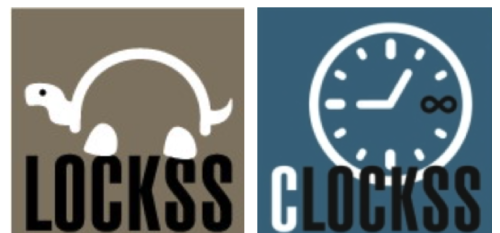Hybrid Classrooms: Switchers and Stayers
Keywords:
Hybrid, Blended learning, Statistics coursesAbstract
This mixed methods case study compiled the qualitative and quantitative grade results of 18 students enrolled in a hybrid statistics course that were given the option to switch mid-semester from hybrid to traditional seated classrooms with the same content, text, syllabus, and instructor. Qualitative items such as rationale for switching classes and overall satisfaction for “stayers” and “switchers” were compared. Quantitatively, the groups began with statistically significant differences and medium to large effect sizes in midterm exam grades (p < .01, d = 2.66), first project grades (p < .01, d = .608), and course grades (p < .001, d = 2.21). After switching, the projects, exams, and course grades were no longer statistically different. No differences were found in the two groups’ time spent online and progress on relevant objectives, further isolating the treatment variable. Despite the improvements and relevant effect sizes, the results only focused on six switching students. More questions must be asked of larger and broader populations before generalizations may be drawn.
References
Alger, J. R. (2002). Online policy, ethics, & law: what you need to know. Part I: Quality and Integrity
issues. Distance Education report 6(11), 2-6.
Arnaud, C. (2013). Flipping chemistry classrooms. Chemical & Engineering News, 91(12), 41-43.
Beard, L. A. & Harper, C. (2002). Quality in distance education: Focus on online versus on campus instruction. Education, 122, 658 – 663.
Berrett, D. (2012). How flipping the classroom can improve the traditional lecture. Education Digest. 78(1), 36-41.
Bogdan, R .C., & Biklen, S. K. (1992). Qualitative research for education: An introduction to theory and methods (2nd ed.). Needham Heights, MA: Allyn and Bacon.
Cohen, J. (1988). Statistical Power Analysis for the Behavioral Sciences. Hillsdale, NJ: Lawrence Erlbaum
Associates.
Chamberlin, W. S. (2001). Face to face versus cyberspace: finding the middle ground, Syllabus, 15, 11.
Creswell, J. (1998). Qualitative inquiry and research design: Choosing among the five traditions. Thousand Oaks, CA: Sage Publications, Inc.
Davies, R., Dean, D., & Ball, N. (2013). Educational Technology Research & Development, 61(4), 563-
Fickes, M. (2013). Flipping classrooms. School Planning & Management, 52(6), 16-21.
Guidera, S. G. (2004). Perception of the effectiveness of online instruction in terms of the seven principles of effective undergraduate education. Journal of Educational Technology, 32(2), 139.
IDEA Center. (2013). Retrieved from http://theideacenter.org/sites/default/files/Sample_DF.pdf
Lorenzetti, J. P. (2004). For quality and cost effectiveness, build a hybrid program. Distance Education report, 8(21), 1-2, 7.
Jackson, M. & Helms, M. (2008). Students’ perceptions of hybrid courses: Measuring and interpreting quality. Journal of Education for Business, 84(1), 7-12.
Klesius, J. P., Homan, S., & Thompson, T. (1997). Distance education compared to traditional education: The students’ view. International Journal of Instructional Media, 24, 207-222.
Mansour, B. & Mupinga, D. M. (2007). Students’ positive and negative experiences in hybrid and online
classes. College Student Journal, 41(1), 242-248.
Noble, D. F. (2003). Digital diploma mills: The automation of higher education. New York: Monthly Review Press.
Ortiz-Rodriguez, M., Telg, R.W., Irani, T., Roberts, T., & Rhoades, E. (2005). College students’ perceptions of quality in distance education: The importance of communication. Quarterly Review of Distance Education, 6(2), 97-105.
Ponzurick, T., France, K., & Logar, C. (2000). Delivering graduate marketing education: An analysis of face-to face versus distance education. Journal of Marketing Education, 22, 180-187.
Ryan, S. (2001). Is online learning right for you? American Agent and Broker 73(6), 54-58.
Simonson, M. (2005). Entering the mainstream. Quality Review of Distance Education, 6(1), 1.
Young, J. R. (2002). Hybrid teaching seeks to end the divide between traditional and online instructions.
Chronicle of Higher Education, 48(28), A33-34.
Wang, A. Y. & Newlin, M. H. (2002). Online lectures: Benefits for the virtual classroom. THE Journal, (29), 17-22.
Downloads
Published
How to Cite
Issue
Section
License
Copyright (c) 2022 Victoria Ingalls

This work is licensed under a Creative Commons Attribution-NonCommercial 4.0 International License.




